Find Your “Honey-Hole” in a Paddler & Fisherman Paradise
Wide-open and secluded waterbodies are spotted throughout the Northwest Florida region, providing spectacular birding and wildlife viewing or an opportunity to cast a line from the shore, paddle out, or fire up an engine to catch “the big one.”
Lake Seminole
The Jim Woodruff Lock & Dam Project was the first of three locks and dams constructed for navigation, hydropower, recreation, and related purposes on the Apalachicola, Chattahoochee, and Flint River systems. Lake Seminole borders both Georgia and Florida and has 37,500 acres of water and over 18,000 acres of surrounding land. Lake Seminole is known as one of the best sites for sports fishing in America. Extensive stump and grass beds provide abundant cover where anglers battle Lunker Largemouth, Scrappy Hybrid, Striped, and White Bass. Sizable populations of Catfish, Crappie, and Bream are also present. All in all, over 79 species of fish have been identified.
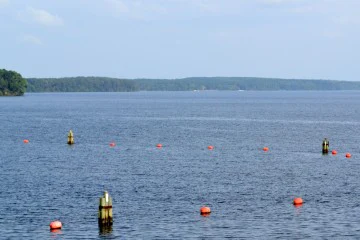
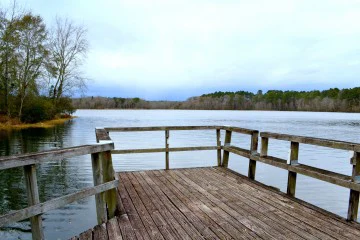
Lake Victor
Located in Holmes County near Westville, Lake Victor is filled with trophy largemouth bass fished annually in the spring and early summer. It is a 130-acre fish management area. The reservoir lake is home to channel catfish, Bluegill (Bream), and Redear (Shellcracker). Plan to catch the limit in mid-May to July. The landing offers a picturesque view of the lake, a short boardwalk, and dock.
Western Lake
This is probably the most photographed coastal dune lake with a backdrop of tall spindly Slash Pines. The unique dune lakes are found in only a few locations worldwide, here in Walton County and Africa. They are intimately connected to the sea through an inflow/outflow channel. However, the outflow does not exchange water all of the time; the actions of sand, wind, and tides cyclically close off the outflow while rainfall and ground seepage increase the freshwater. Eventually, high water forces open the channel again and a more tidal exchange begins to take place. At 214 acres, Western Lake is one of the larger dune lakes. These waterways have the highest occurrences of rare wildlife species in the state, some of which are found nowhere else in the world. Grayton Beach State Park offers canoe rentals for direct access to Western Lake.
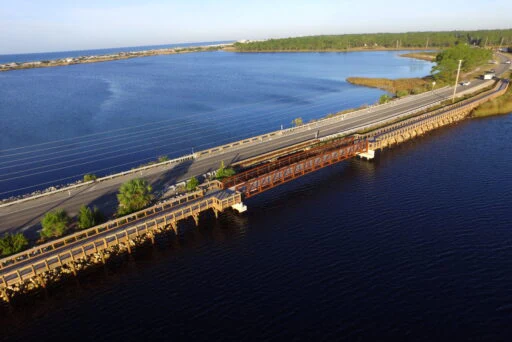
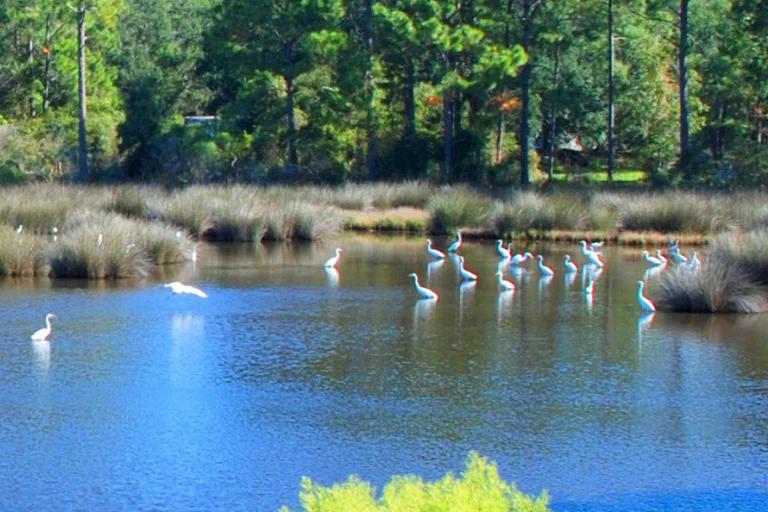
Frog Pond
Located just east of Carrabelle on the Big Bend Scenic Byway, at Gulf Avenue one mile west of Highway 98, Frog Pond is a favorite bird-watching spot for local and migrating species as they gather where several upland creeks flow into a tidal pond at the top of St. George Sound.
Econfina Creek
Econfina (e-con-FINE-ah) Creek originates in southern Jackson County and flows without any structures or interruptions some 26 miles through Washington County to the Deer Point Lake reservoir in Bay County. Econfina Creek offers the steepest gradient of any designated canoe trail in the state. Canoeists pass waterfalls, rock outcrops, log jams, riverbed springs, and plentiful birdlife as they approach State Road 20, where the Gainer Springs Complex enters from numerous vents, filling a deep clear pool surrounded by palms, cypress, and mixed hardwoods. A 14-mile extension of the Florida National Trail traverses remnant old growth native longleaf pine and wiregrass communities, which still exist on District land near State Road 20 and at Hobb’s Pasture near Deer Point Lake Reservoir. The natural, rolling sandhills entice equestrians to ride a half-dozen blazed trails among pristine lakes, lush wildflowers, varied wildlife, and ever-changing panoramas.
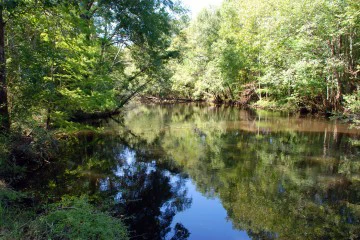

Holmes Creek
Holmes Creek is a state-designated canoe trail and may be accessed by several public boat landings. It flows through areas with high sandy banks and beautiful hardwood swamps until its confluence with the Choctawhatchee River. It provides among the most diverse habitats and richest variety of fish and mollusks in the Choctawhatchee River basin. Its lower reach swells with azure springs, increasing average flow and providing distinctive stream havens for fish, reptiles, and mollusks. Holmes Creek is also richer in freshwater snail species than any other river in the Florida Panhandle. Three as yet unnamed species of snails were found to be endemic, or confined, to the creek, Choctawhatchee, and Chipola river drainages. Dozens of springs, seeps, and sand boils are worth exploring. The largest is Cypress Spring, which is a second magnitude spring. Beckton Spring is also notable for its pristine habitat.
